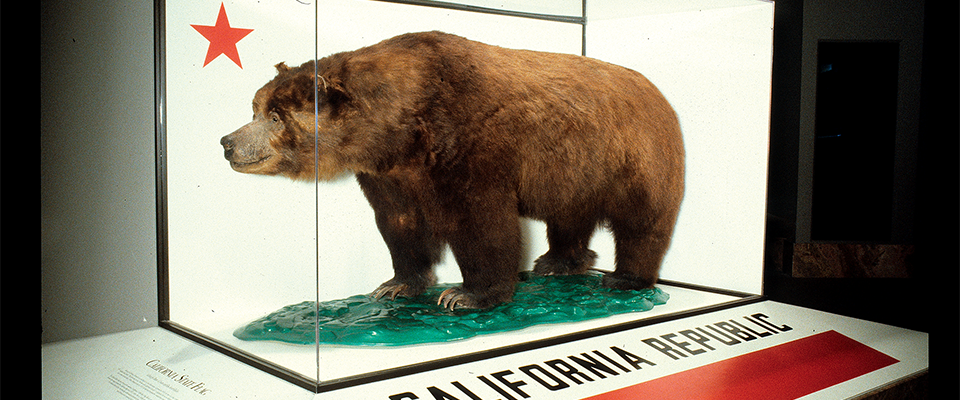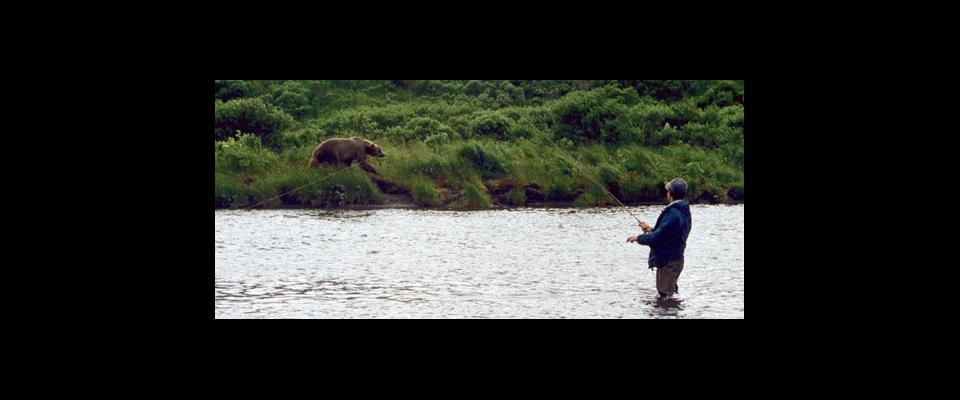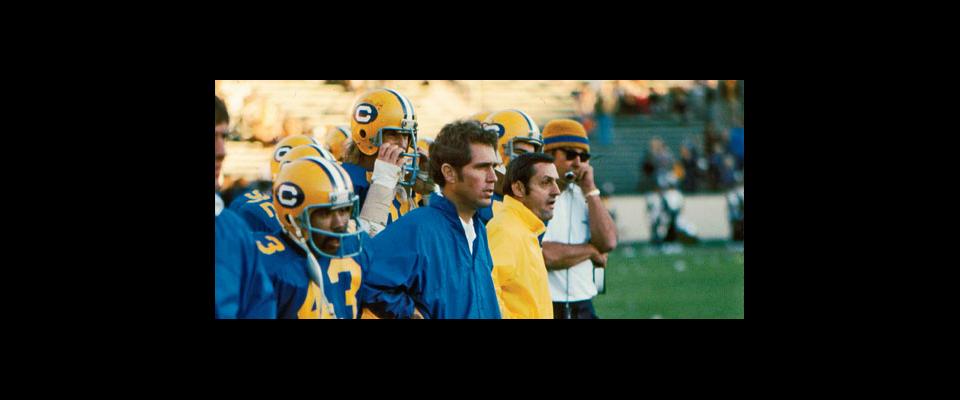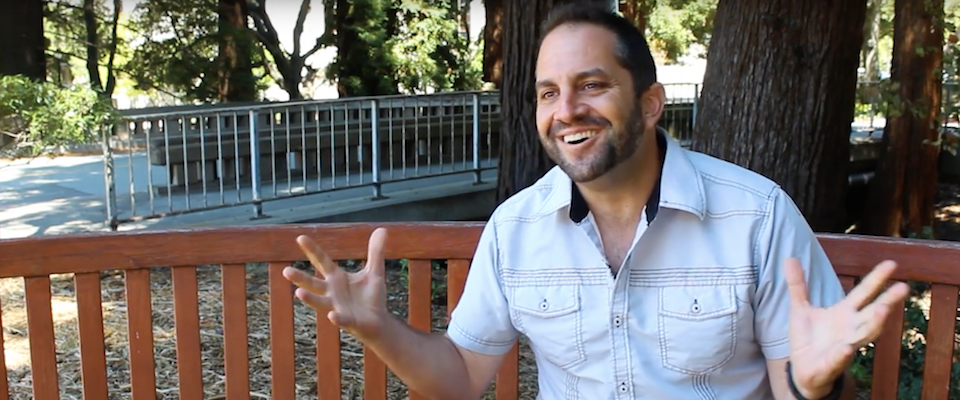This used to be Bear Territory. Could it be again?
We live in a place where the state animal—mascot of this very university—has been extinct for just shy of a century. No one alive today has ever seen one, but not so long ago they roamed California by the thousands, in kind with the Hupa, Miwok, Yahi, and all the multivarious human tribes that also inhabited the land.
Sadly, the grizzlies did not survive Europeans and gunpowder. In 1772, one was shot to death on the banks of Strawberry Creek just west of what is now the Berkeley campus by a member of the de Anza expedition. One hundred fifty years later, the last-known physical specimen of Ursus arctos californicus was gunned down in Tulare County. And that was it: As the dodo went, so went the Golden Bear.
As Berkeley Professor Anthony Barnosky established in a landmark study published in 2011, we are on the cusp of what is commonly called the “sixth extinction,” a mass die-off to rival the one that wiped out the dinosaurs some 66 million years ago. That event, we know (also thanks to Berkeley scientists), was caused by an asteroid impact.
This time, it seems, the asteroid is us. The damage is irreversible.
Or is it?
In this issue, California’s Leah Worthington examines the outlandish, but increasingly plausible, idea that science may be able to resurrect extinct species, from recently departed northern white rhinos to long-gone Ice Age mammoths. Worthington’s test species is the passenger pigeon, once so numerous in North America that they darkened skies as they migrated overhead. Newfangled genetic wizardry may have them darkening skies once again.
There are plenty of reasons why so-called “de-extinction,” however well intentioned, might be a bad idea. And yet the law of technological inevitability suggests that anything we can do, we will. Given that, it behooves us to start thinking now about how we might use the practice judiciously, in service to worthy ecological ends. One of the people leading that discussion is Berkeley alum and UC Santa Cruz ecologist Douglas McCauley. As he cautions: “Unless we actually think about what was it that caused [these species’] extinction in the first place, these things coming out of our lab are not going to stand a chance for survival, and we’re going to see more species be pushed to the brink of extinction.” See “Should We Bring Them Back?”
While many of us are wringing our hands over the fate of this planet, others are yearning to colonize new ones—or at least venture in that direction. In what Berkeley Professor Robert Reich called “one small step for billionaires,” Virgin Atlantic/Galactic’s Richard Branson took a brief sub-orbital jaunt in July, followed by Amazon/Blue Origin’s Jeff Bezos, who spent 11 minutes in space several days later. The scuttlebutt is that Tesla/SpaceX’s Elon Musk isn’t far behind. (For the record, a Berkeley billionaire was there first and went farther: Charles Simonyi logged not one, but two, privately financed trips to the International Space Station.)
As California’s Laura Smith observes in the pages ahead, we are clearly in a new space race—one between nabobs, not nations. And while many are hailing Bezos, Branson, Musk, et al. as visionaries, Smith wonders: Do we really want to buy the vision they’re selling? Read “Billionaires in Space.”
If there’s a more expansive and democratic version of the space tourism dream, it may involve the servant classes who will no doubt be required to tend to the rocket set’s needs and whims, much as air hostesses tended to those of the jet set. Cal alumna Holly Borowiak-Rogers flew with Pan Am to destinations like Moscow and Tehran in the golden age of air travel and found the experience both liberating and eye opening.
Professor Eric Stover has also traveled the globe in his long career as a human rights investigator, leading forensic teams in unearthing mass graves and other evidence of atrocities in places like El Salvador, the Balkans, and Rwanda. His most recent focus is closer to home—in Tulsa, Oklahoma, site of a race massacre that took place there 100 years ago. Former Washington Post reporter and Tulsa native Gary Lee profiles Stover in his story, “Grave Justice.”
Those are just some of the highlights of this issue, which also includes a centennial celebration of the UC Museum of Paleontology, an interview with Lisa Armstrong, a new hire at the Berkeley Graduate School of Journalism, and news of Berkeley’s first auction of a non-fungible token, or NFT—another harbinger of things to come.
Rich Lyons, Berkeley’s chief innovation and entrepreneurship officer, was one of the people behind the NFT effort. He described it to me via email as “one of the most fun Berkeley projects I’ve ever worked on. We were ‘schooled’ the whole way by a team of recent grads who know this world inside and out.” He signed off: “It is not our world, my friend.”
From the Fall 2021 issue of California.





















